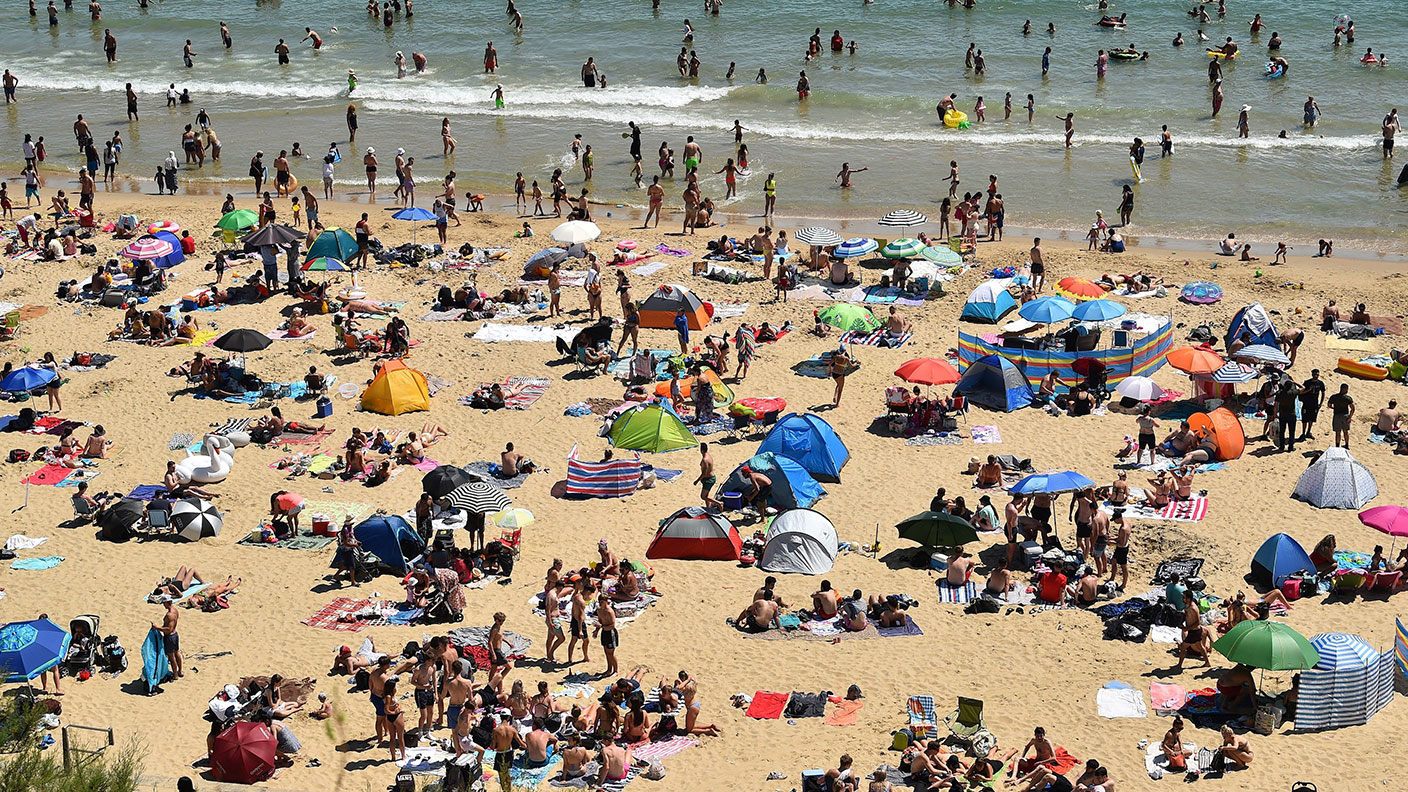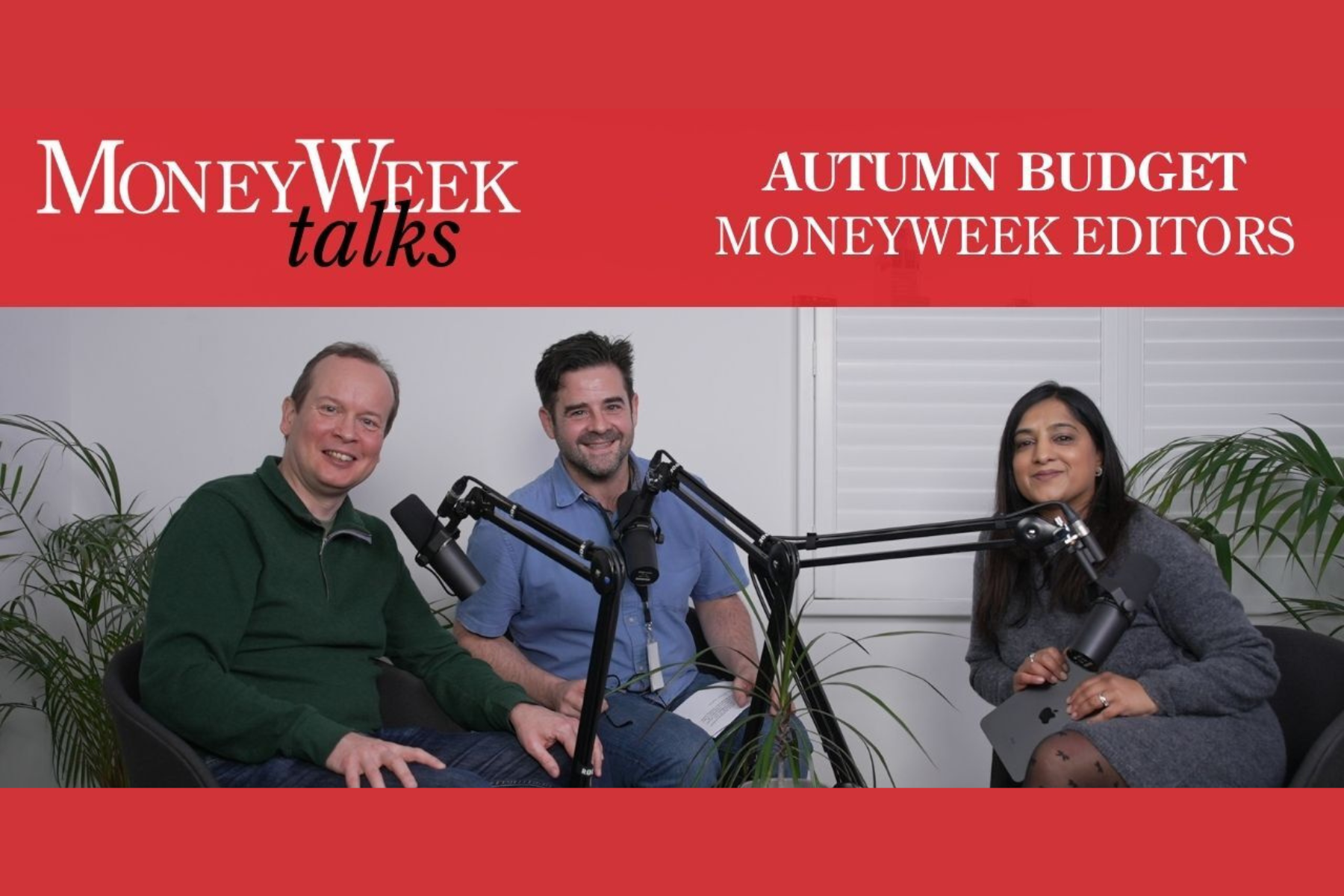How “pent-up demand” could drive a V-shaped economic recovery
“Pent-up demand” is usually a myth. But not this time. The Covid lockdown has created genuine pent-up demand, says Merryn Somerset Webb. That’s now being released.


Last Thursday, thousands of people descended on Bournemouth beach – a popular spot in the south of the UK. They sunbathed close to each other, picnicked, swam, drank, played and left many tonnes of rubbish behind. Local authorities, panicked by potential Covid-19 spreading, declared themselves “absolutely appalled” at the “irresponsible . . . actions of so many people” – and promptly issued 558 parking tickets.
However, there is another way to look at this and similarly crowded US beaches. Both may be less a disaster-in-waiting and more a sign of the pent-up demand that, in normal life, would make a V-shaped economic recovery likely in the developed world.
In most cases, the notion of “pent-up demand” makes no sense. Either people have the urge and the cash to buy something, or they do not. If they have both, there is demand. If they have the urge but not the cash, it is not pent-up demand but wishful thinking.
MoneyWeek
Subscribe to MoneyWeek today and get your first six magazine issues absolutely FREE

Sign up to Money Morning
Don't miss the latest investment and personal finances news, market analysis, plus money-saving tips with our free twice-daily newsletter
Don't miss the latest investment and personal finances news, market analysis, plus money-saving tips with our free twice-daily newsletter
Today, things are rather different. For months, much of the global population has been locked-down, making normal economic activity logistically impossible. People haven’t avoided buying stuff because they don’t want it. Nor, in most cases, because they can’t afford it.
This isn’t a normal recession
Most recessions are caused by something that slashes real disposable incomes one way or another, be it via a rise in interest rates, inflation or taxes, or because of a nasty cyclical imbalance that leads to a financial crisis. This recession has not been like that. In most of the West, income replacement during lockdown has been generous: nearly 70% of Americans have got more from state-provided income during the crisis than when they worked (the median replacement rate is 134%, according to a University of Chicago study.) This has created genuine pent-up demand – and recent numbers show that it is now being released.
US car sales were 70% of their pre-Covid levels by mid-May, having collapsed in March. French consumer spending in May was only 7% below normal. In the UK, this week’s long-awaited lockdown loosening saw restaurant reservations and hotel bookings soar. In Germany, most June data suggested that “economic and social activity has started to pick up significantly”, according to ING. “Optimism is back.” Time spent on public transport is rising. Air pollution has returned to near pre-Covid levels in Europe as drivers take to the road: UK motor vehicle journeys rose to 77% of pre-Covid levels this week. Apple’s mobility data backs up the feeling we are on the move again.
It's tempting, given today’s bias to misery, to assume that this is just a temporary blip that will burn itself out as trade tensions and unemployment rise, and new lockdowns loom amid a second wave of virus hell. But that is not a given.
First, fiscal and monetary support has been stunning. We are in a whole new world of state support of what were once capitalist economies. Morgan Stanley notes that the central banks of the G4 countries – US, Japan, Europe and the UK – will collectively expand their balance sheets by 28% of GDP over this cycle. The equivalent number during the 2008 financial crisis was 7%. Fiscal deficits are soaring too: across the G4 and China, the bank says, they will hit 17% of GDP in 2020.
People want to get out and spend
The key point is where the cash is going. In 2008, it went mostly to the financial sector. Today, it is flowing to non-financial corporates and households. In much of Europe, this will continue for some time: many governments have extended support measures to the end of the year.
Economies are also kicking off with relatively healthy financial systems. There is no reason to expect deleveraging or bad loan losses anything like those of 2008 (particularly given the state support). Good firms have also used the crisis to get better. Lockdown might even trigger the wave of digitalisation and productivity gains that we’ve all been waiting for.
Finally, new nationwide lockdowns are unlikely. Yes, Covid-19 cases are going up in the US. But globally most leaders are clear they do not intend to lockdown again. Why would they, given that it costs up to 3% of GDP a month, as UBS puts it?
“We won’t be closing the country again”, said US president Donald Trump this week. “We won’t have to do that.” He’s probably right. Better to shield the vulnerable and let everyone else out. It’s a choice that populations are making anyway: the average age of the newly infected in the US is “significantly younger than . . . in the original outbreak in the north-east,” says Gavekal Research.
There are many models that predict a miserable future. The IMF has just knocked another 1.9% off its GDP forecasts for 2020. But if there is one thing we have learnt in recent months it is that models contain no certainty, just suggestions of a range of possible outcomes. Moreover, these outcomes can be derailed instantly if, say, people suddenly decide they are not too scared to re-engage socially.
Morgan Stanley, which has a positive model on the go, reckons that economic output globally will return to pre-Covid levels by the end of the year. Bournemouth suggests it has a good chance of being right.
• This article was first published in the Financial Times
Get the latest financial news, insights and expert analysis from our award-winning MoneyWeek team, to help you understand what really matters when it comes to your finances.
Merryn Somerset Webb started her career in Tokyo at public broadcaster NHK before becoming a Japanese equity broker at what was then Warburgs. She went on to work at SBC and UBS without moving from her desk in Kamiyacho (it was the age of mergers).
After five years in Japan she returned to work in the UK at Paribas. This soon became BNP Paribas. Again, no desk move was required. On leaving the City, Merryn helped The Week magazine with its City pages before becoming the launch editor of MoneyWeek in 2000 and taking on columns first in the Sunday Times and then in 2009 in the Financial Times
Twenty years on, MoneyWeek is the best-selling financial magazine in the UK. Merryn was its Editor in Chief until 2022. She is now a senior columnist at Bloomberg and host of the Merryn Talks Money podcast - but still writes for Moneyweek monthly.
Merryn is also is a non executive director of two investment trusts – BlackRock Throgmorton, and the Murray Income Investment Trust.
-
 How much would it cost you to buy a house in Great Britain's happiest places?
How much would it cost you to buy a house in Great Britain's happiest places?Average asking prices for a property in the happiest place in Britain are below the national average
-
 How the Budget will hurt you: MoneyWeek Talks
How the Budget will hurt you: MoneyWeek TalksPodcast An Autumn budget podcast special episode, featuring MoneyWeek editors Kalpana Fitzpatrick, Andrew van Sickle and Cris Heaton.
-
 What's behind the big shift in Japanese government bonds?
What's behind the big shift in Japanese government bonds?Rising long-term Japanese government bond yields point to growing nervousness about the future – and not just inflation
-
 UK wages grow at a record pace
UK wages grow at a record paceThe latest UK wages data will add pressure on the BoE to push interest rates even higher.
-
 Trapped in a time of zombie government
Trapped in a time of zombie governmentIt’s not just companies that are eking out an existence, says Max King. The state is in the twilight zone too.
-
 America is in deep denial over debt
America is in deep denial over debtThe downgrade in America’s credit rating was much criticised by the US government, says Alex Rankine. But was it a long time coming?
-
 UK economy avoids stagnation with surprise growth
UK economy avoids stagnation with surprise growthGross domestic product increased by 0.2% in the second quarter and by 0.5% in June
-
 Bank of England raises interest rates to 5.25%
Bank of England raises interest rates to 5.25%The Bank has hiked rates from 5% to 5.25%, marking the 14th increase in a row. We explain what it means for savers and homeowners - and whether more rate rises are on the horizon
-
 UK inflation remains at 8.7% ‒ what it means for your money
UK inflation remains at 8.7% ‒ what it means for your moneyInflation was unmoved at 8.7% in the 12 months to May. What does this ‘sticky’ rate of inflation mean for your money?
-
 Would a food price cap actually work?
Would a food price cap actually work?Analysis The government is discussing plans to cap the prices of essentials. But could this intervention do more harm than good?
